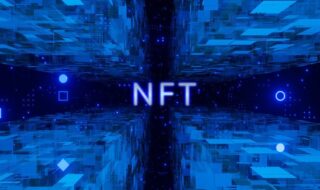Have you ever found yourself stuck in the middle of seemingly unending back and forth movements from one office to another, application after the other, and all of this for the sole purpose of refinancing your burdensome home mortgage?
The old paperwork process involved can be tiring. In our twenty-first-century era, better defined with ever-growing technologies more than anything else, mortgage refinancing is significantly boosted by Blockchain technology. What is Blockchain technology? How does it work? Besides, how does it influence the mortgage company? Visit Loan Advisor about home refinancing, in case you need clear answers to these questions and many more. Read along.
Contents
What Blockchain technology is

Think of any data that is stored in digital format, and that has to be decentralized to various authorized persons and institutions. That is what this technology does. For example, all of the information required by an institution- banking, school, company, government and sports sectors-, regarding its members and clients can be stored digitally in a protected online database.
Three essential components of the Blockchain technology corroborate each other in the system.
- The transaction records
- The definitive block
- The developed chain
The transaction records
Any purchase made or property acquired is incorporated in the records as a transaction. All essential details of the property –for example, house- bought are recorded in the business deal. If you engage in acquisition of a house all the particulars of the deal, including your digital signature is noted down.
The definitive block
For a record to be logged into the system, it must be verified to ascertain its authenticity. No fraudulent transactions are accepted. A series of computer networks- nodes- receives and reviews the specifics of the transactions. After verifying and establishing that they are legitimate, the specifics are stored in the block. This is given a unique tag called a hash. The current block then fits in a chain of previously stored ones.
The developed chain
Once a block is complete, it is joined to others to form a chain. The system is set in a manner that the last block can read the hash of the one before it in the series. Before a new block is introduced to the chain, its record is first verified and confirmed, be assigned a code and the hash of the preceding block then logged in on the chain.
How Blockchain technology works
You might be wondering at this point, “Is it different from other ledgers?”
Likewise, someone would say, “The usual bank system does the same things, confirms the cardholder, amount of cash in your account …” and several more others. Consider one significant difference.
- decentralized operation
Many databases, almost all, have their operations pivoting around a standard centralized hub. For instance, the bank serves a consolidator role and is responsible for confirmation and approval of transaction records. This feature is absent in Blockchain. All computers in the network chain are independent in the disbursement of service to clients. Whereas the confirmation of key individuals involved in a transaction is required for accessing banking ledgers, none is, in Blockchain technology which is open to the public view unrestrained.
Even though Blockchain technology and accelerators are yet to be embraced as standards for working in the home refinancing industry, its rising popularity has a promising future. To comprehend the beneficial impact it has in the mortgage industry, it is better if you review procedures involved in traditional mortgage operations. Moreover, consideration should also be accorded to the timeframe involved in the whole process.
Traditional mortgage processes
This section briefly explains steps followed before receiving a mortgage.
- Pre-approval
Before any purchase and transaction process gets underway, the real estate person will want to see if you can hold up your end of the deal.
You would want to go for a tri-merge -credit report- which highlights your payment history. Recognized institutions and a third party approve the credit report.
- Pre-qualification
A loan officer after that takes you through a series of basic questions to assess your capability to settle the loan.
- Application
A Uniform Residential Loan Application (URLA) form is filled. It gives the mortgage lender needed information to decide whether to lend or not to.
- Processing
The loan processor verifies details of application; the transaction deal is ascertained to ensure it is legal.
- Underwriting
The underwriter then checks through the URLA form and approves it go ahead or stops it from further processing.
- Settlement
After the whole procedure is finalized and approval made, you are free to occupy your new home.
Contingent on the number of people simultaneously going through the mortgage application process and the time of the year involved, it will take one between thirty to sixty days to finalize everything. This long, time-consuming process can be cut short and brought to the comfort of one’s sitting room.
Several benefits accrue from going digital in home refinancing. Moreover, all persons involved in the former procedures can benefit greatly from Blockchain technology.
Impacts of Blockchain technology
Improvement of verification
All stages involving verification are made easier. For example, credit report history, property ownership and other documents are readily accessible to anyone because of digital technology.
Improved record-keeping
Piles of papers that exist on the desks of underwriters and loan processors from thousands of mortgage applicants are all found in one organized and accessible online database station.
Lower buying price
The mortgage industry, just like other businesses, has intermediaries who in the process, increase the price of a facility to be purchased. This modern technology eliminates this aspect and restores the cost to its proper value.
The Bottom Line
The paperwork involved, getting approval from all the parties at every step on the way and time spent in the stages is too much work that is unnecessary for this age.
Muscles flexed and the fuel burned to name but the general stresses involved, are excessively strenuous a path to tread on especially in such an era that humanity boasts of the complex technological feats it has soared in recent years. To rise above this development-delimiting factor in the mortgage industry, Blockchain technology would be a perfect substitute for the old-style mortgage procedures.



